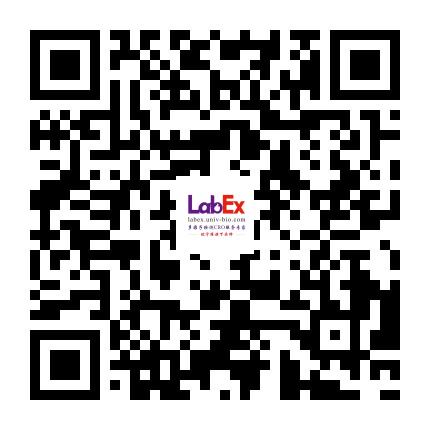Lack of FFAR1/GPR40 does not protect mice from high-fat diet-induced metabolic disease
Metabolic;代谢免疫分析;MSD;代谢/内分泌- Diabetes
- 2008
- 9.337
- 7(9):779-86.
- Canine,Human,Mouse,Non-Human Primate,Rat
- MSD
- Plasma
- 免疫/内分泌
- GLP-1, Insulin
相关货号
LXMC04-1LXMH02-1LXMH03-4LXMH04-7LXMH07-3LXMH07-5LXMH07-7LXMH07-8LXMH10-9LXMH111-1LXMH22-1LXMH87-1LXMM02-2LXMM02-3LXMM03-2LXMM03-3LXMM06-2LXMM06-3LXMM06-4LXMM08-1LXMM10-3LXMM13-1LXMM58-1LXMN06-2LXMR02-2LXMR02-3LXMR03-3LXMR03-4LXMR06-1LXMR06-2LXMR07-1LXMR12-1
Abstract
Background: PBT2 is a metal-protein attenuating compound (MPAC) that affects the Cu2(+)-mediated and Zn2(+)-mediated toxic oligomerisation of Abeta seen in Alzheimer's disease (AD). Strong preclinical efficacy data and the completion of early, clinical safety studies have preceded this phase IIa study, the aim of which was to assess the effects of PBT2 on safety, efficacy, and biomarkers of AD.
Methods: Between December 6, 2006, and September 21, 2007, community-dwelling patients over age 55 years were recruited to this 12-week, double-blind, randomised trial of PBT2. Patients were randomly allocated to receive 50 mg PBT2, 250 mg PBT2, or placebo. Inclusion criteria were early AD (mini-mental state examination [MMSE] score between 20 and 26 points or Alzheimer's disease assessment scale-cognitive subscale (ADAS-cog) score between 10 and 25 points), taking a stable dose of acetylcholinesterase inhibitor (donepezil, galantamine, or rivastigmine) for at least 4 months, a modified Hachinski score of 4 points or less, and CT or MRI results that were consistent with AD. The principal outcomes were safety and tolerability. Secondary outcomes were plasma and CSF biomarkers and cognition. Analysis was intention to treat. The trial is registered with ClinicalTrials.gov, number NCT00471211.
Findings: 78 patients were randomly assigned (29 to placebo, 20 to PBT2 50 mg, and 29 to PBT2 250 mg) and 74 (95%) completed the study. 42 (54%) patients had at least one treatment emergent adverse event (10 [50%] on PBT2 50 mg, 18 [62%] on PBT2 250 mg, and 14 [48%] on placebo). No serious adverse events were reported by patients on PBT2. Patients treated with PBT2 250 mg had a dose-dependent (p=0.023) and significant reduction in CSF Abeta(42) concentration compared with those treated with placebo (difference in least squares mean change from baseline was -56.0 pg/mL, 95% CI -101.5 to -11.0; p=0.006). PBT2 had no effect on plasma biomarkers of AD or serum Zn(2+) and Cu(2+) concentrations. Cognition testing included ADAS-cog, MMSE, and a neuropsychological test battery (NTB). Of these tests, two executive function component tests of the NTB showed significant improvement over placebo in the PBT2 250 mg group: category fluency test (2.8 words, 0.1 to 5.4; p=0.041) and trail making part B (-48.0 s, -83.0 to -13.0; p=0.009).
Interpretation: The safety profile is favourable for the ongoing development of PBT2. The effect on putative biomarkers for AD in CSF but not in plasma is suggestive of a central effect of the drug on Abeta metabolism. Cognitive efficacy was restricted to two measures of executive function. Future trials that are larger and longer will establish if the effects of PBT2 on biomarkers and cognition that are reported here translate into clinical effectiveness.
Methods: Between December 6, 2006, and September 21, 2007, community-dwelling patients over age 55 years were recruited to this 12-week, double-blind, randomised trial of PBT2. Patients were randomly allocated to receive 50 mg PBT2, 250 mg PBT2, or placebo. Inclusion criteria were early AD (mini-mental state examination [MMSE] score between 20 and 26 points or Alzheimer's disease assessment scale-cognitive subscale (ADAS-cog) score between 10 and 25 points), taking a stable dose of acetylcholinesterase inhibitor (donepezil, galantamine, or rivastigmine) for at least 4 months, a modified Hachinski score of 4 points or less, and CT or MRI results that were consistent with AD. The principal outcomes were safety and tolerability. Secondary outcomes were plasma and CSF biomarkers and cognition. Analysis was intention to treat. The trial is registered with ClinicalTrials.gov, number NCT00471211.
Findings: 78 patients were randomly assigned (29 to placebo, 20 to PBT2 50 mg, and 29 to PBT2 250 mg) and 74 (95%) completed the study. 42 (54%) patients had at least one treatment emergent adverse event (10 [50%] on PBT2 50 mg, 18 [62%] on PBT2 250 mg, and 14 [48%] on placebo). No serious adverse events were reported by patients on PBT2. Patients treated with PBT2 250 mg had a dose-dependent (p=0.023) and significant reduction in CSF Abeta(42) concentration compared with those treated with placebo (difference in least squares mean change from baseline was -56.0 pg/mL, 95% CI -101.5 to -11.0; p=0.006). PBT2 had no effect on plasma biomarkers of AD or serum Zn(2+) and Cu(2+) concentrations. Cognition testing included ADAS-cog, MMSE, and a neuropsychological test battery (NTB). Of these tests, two executive function component tests of the NTB showed significant improvement over placebo in the PBT2 250 mg group: category fluency test (2.8 words, 0.1 to 5.4; p=0.041) and trail making part B (-48.0 s, -83.0 to -13.0; p=0.009).
Interpretation: The safety profile is favourable for the ongoing development of PBT2. The effect on putative biomarkers for AD in CSF but not in plasma is suggestive of a central effect of the drug on Abeta metabolism. Cognitive efficacy was restricted to two measures of executive function. Future trials that are larger and longer will establish if the effects of PBT2 on biomarkers and cognition that are reported here translate into clinical effectiveness.
金课堂之文献解析 文献原文请点击
本网站销售的所有产品及服务均不得用于人类或动物之临床诊断或治疗,仅可用于工业或者科研等非医疗目的。







 沪公网安备31011502400759号
沪公网安备31011502400759号
 营业执照(三证合一)
营业执照(三证合一)


